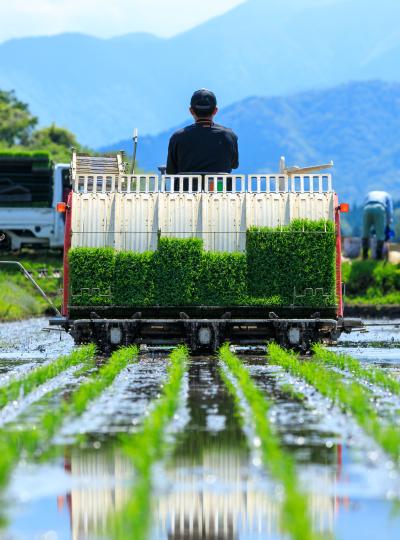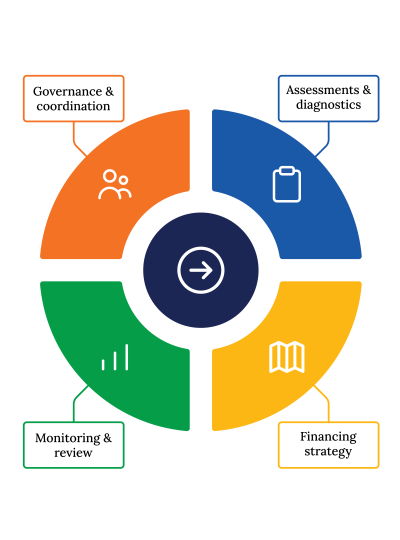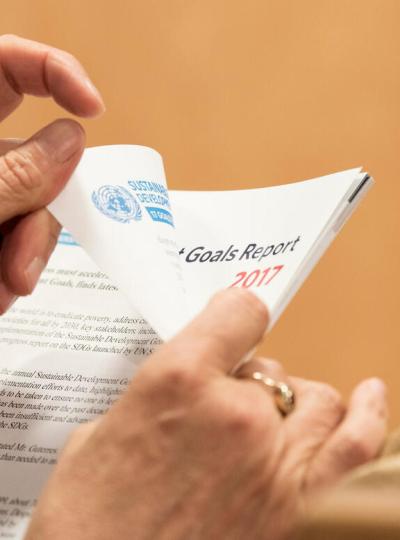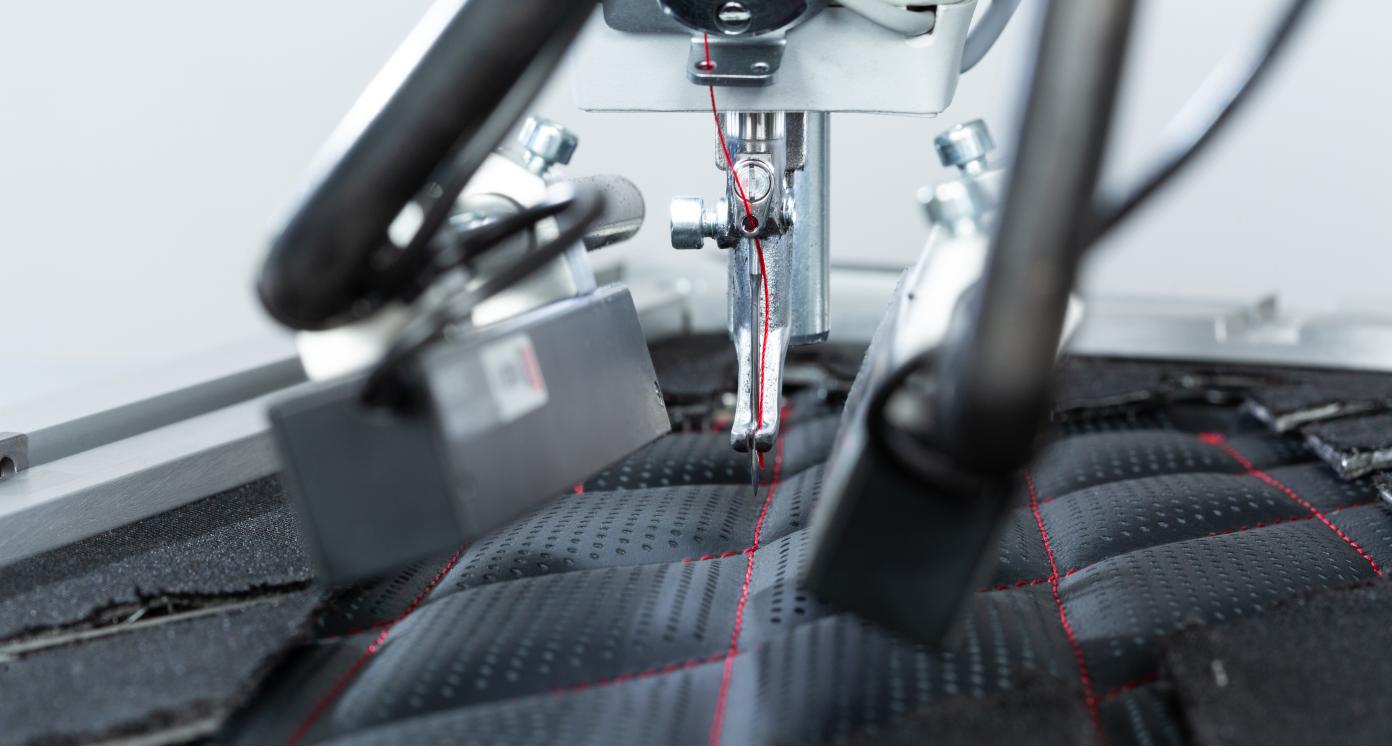Automotive Components
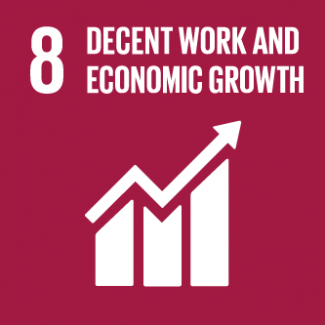
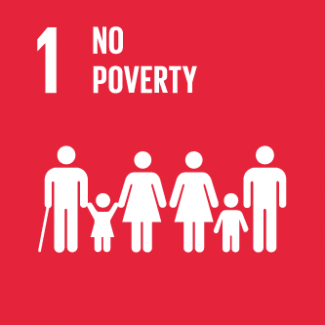
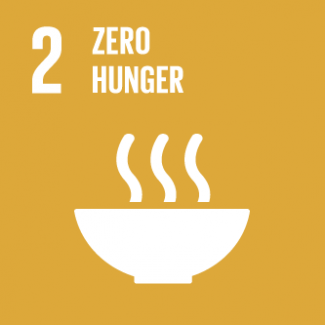
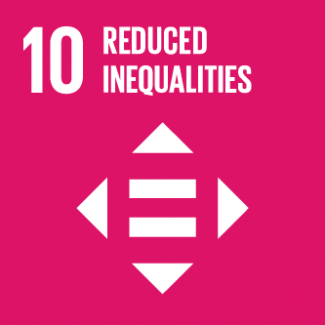
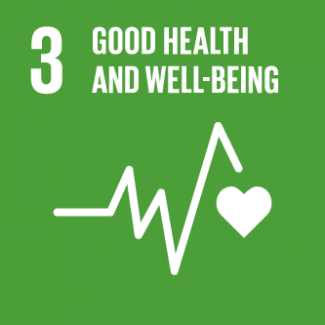
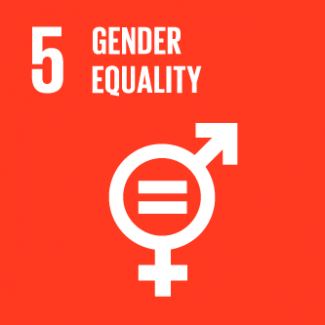
Business Model Description
Set up a factory to manufacture motor vehicle seat covers for specified car models in the South African motor industry, based on multi-year contracts, with long term plan to access other regional trade arrangements, such as African Continental Free Trade Area (AfCFTA), European Union (EU) and USA to expand and capture the international market.
Expected Impact
Promote exports and contribute to economic growth, foreign earnings, and create jobs.
How is this information gathered?
Investment opportunities with potential to contribute to sustainable development are based on country-level SDG Investor Maps.
Disclaimer
UNDP, the Private Finance for the SDGs, and their affiliates (collectively “UNDP”) do not seek or solicit investment for programmes, projects, or opportunities described on this site (collectively “Programmes”) or any other Programmes, and nothing on this page should constitute a solicitation for investment. The actors listed on this site are not partners of UNDP, and their inclusion should not be construed as an endorsement or recommendation by UNDP for any relationship or investment.
The descriptions on this page are provided for informational purposes only. Only companies and enterprises that appear under the case study tab have been validated and vetted through UNDP programmes such as the Growth Stage Impact Ventures (GSIV), Business Call to Action (BCtA), or through other UN agencies. Even then, under no circumstances should their appearance on this website be construed as an endorsement for any relationship or investment. UNDP assumes no liability for investment losses directly or indirectly resulting from recommendations made, implied, or inferred by its research. Likewise, UNDP assumes no claim to investment gains directly or indirectly resulting from trading profits, investment management, or advisory fees obtained by following investment recommendations made, implied, or inferred by its research.
Investment involves risk, and all investments should be made with the supervision of a professional investment manager or advisor. The materials on the website are not an offer to sell or a solicitation of an offer to buy any investment, security, or commodity, nor shall any security be offered or sold to any person, in any jurisdiction in which such offer would be unlawful under the securities laws of such jurisdiction.
Country & Regions
- Lesotho: Maseru District
- Lesotho: Leribe District
- Lesotho: Butha-Buthe District
Sector Classification
Consumer Goods
Development need
Lesotho has very high export product concentration, which limits its export market and earnings. NSDP II notes that competitiveness in manufacturing is undermined by limited access to finance, low productivity, limited technical, marketing, and financial skills, inadequate business development services, limited industrial and logistics infrastructure, among others (1, 2).
Policy priority
NSDP II aims to implement policy interventions that develop comprehensive export promotion programme for manufacturing and service sector, including developing incentive framework to encourage research and development in the sector (2).
Gender inequalities and marginalization issues
Lesotho manufacturing is dominated by female labour of 69%. However, lack of comprehensive export promotion programme and wider export-oriented policies undermine the potential for additional job opportunities for women, with implications for sustained gender inequalities (2, 23).
Investment opportunities introduction
Lesotho's potential export products provide investment opportunities of 77 products, of which 62 are globally competitive. Potential export destinations are 238, and are also supported by favourable trade agreements in Africa, Europe and South America (1, 18).
Key bottlenecks introduction
Lesotho ranks 123 out of 131 world countries on technological readiness which is considered low and impacts investment readiness and global competitiveness (10).
Consumer Discretionary Products
Development need
Limited technical skills and low technological readiness ranking of 123 out of 131 countries, including high export product concentration, make Lesotho less competitive in global markets (2, 10).
Policy priority
NSDP II aims to establish operational industrial clusters to promote shared inputs and productivity spill-overs, through learning and technology transfer. The bilateral agreement under the South African Automotive Production and Development Programme (APDP) also qualifies Lesotho for local content for supplying automotive components to the South African motor industry (3).
Gender inequalities and marginalization issues
According to data from the European Commission, women made up 16% of the automotive workforce in 2019 and increased to 20% in 2021, confirming a gender bias in the industry (24).
Investment opportunities introduction
Lesotho has opportunities to manufacture small components of finished products to support the South African Automotive Industry (OEMs) and in the long term develop capacity to service export markets (3).
Key bottlenecks introduction
Lack of factory space, which is largely provided by the IPA in the manufacturing industry, remains a critical bottleneck.
Consumer Goods Retail
Pipeline Opportunity
Automotive Components
Set up a factory to manufacture motor vehicle seat covers for specified car models in the South African motor industry, based on multi-year contracts, with long term plan to access other regional trade arrangements, such as African Continental Free Trade Area (AfCFTA), European Union (EU) and USA to expand and capture the international market.
Business Case
Market Size and Environment
USD 50 million - USD 100 million
South African motor vehicle production was 555,889 units in December 2022 increasing from 499,087 units in December 2021. Adient supplies seat covers to South Africa under renewable rolling multi-year contracts with Ford, Volkwagen and Nissan. Adient supplied USD 36.4 million worth of seat covers in 2022/23 (4, 22).
Indicative Return
15% - 20%
Adient recorded 15% - 20% ROI, supported by renewable multi-year rolling contracts supplying seat covers to 140,000 Ford Rangers/year for 10 years, 50,000 Volkwagen Amaroks/year for 7 years and 23,500 Nissan Navaras/year for 7 years (4).
Investment Timeframe
Short Term (0–5 years)
Through the stable and growing South African motor vehicle market, Adient was able to significantly increase its sales and returns within 3 years of operation (4).
Ticket Size
USD 1 million - USD 10 million
Market Risks & Scale Obstacles
Business - Supply Chain Constraints
Market - High Level of Competition
Market - Highly Regulated
Impact Case
Sustainable Development Need
The slowdown in Lesotho's manufactured exports under the African Growth and Opportunity Ac (AGOA) has seen GDP growth slumping from 7.9% between 2002 and 2010 (1) to an average of 1.7% between 2011 and 2020 (5). To accelerate growth and development, a robust export-oriented policy is crucial (1).
Increasing global competition in the apparel industry is forcing some firms to close down, with implications for job loses and poverty (26).
Gender & Marginalisation
Lesotho's apparel industry created opportunities for women's empowerment and job creation in export-led sectors (7). But recent export contraction has negatively affected women and their rural households and reversed the previous gains.
Women workers are in the majority in the apparel industry, and the export contraction in the industry leads to retrenchments, which mostly affect them and undermine their responsibilities in their rural households.
Expected Development Outcome
Investment in automotive components contributes to diversification of export products and markets and potentially contributes to the desirable annual GDP growth of 5% and the balance of payments.
Investment in automotive components contributes to product diversification and already has a targeted market, which boasts rolling multi-year contracts that will help create sustainable jobs in the manufacturing sector.
Gender & Marginalisation
Although men are a majority in the motor industry, textile and seat cover manufacturing is dominated by women, and increases in the seat cover exports will create jobs for women and empower them, including improving their wellbeing.
Investment in automotive component helps diversify Lesotho's products and markets, and creates jobs, mostly for women, as they are in the majority in the manufacturing sector. This contributes to the livelihoods of the rural households.
Primary SDGs addressed

8.1.1 Annual growth rate of real GDP per capita
USD 1,094 as of 2021 (19).
7% growth per annum (20).

1.1.1 Proportion of the population living below the international poverty line by sex, age, employment status and geographic location (urban/rural)
National poverty rate 49.7% (2018); Urban 24.7% and rural 67.8% (8).
Reduced by 50% by 2030 (2).

2.1.1 Prevalence of undernourishment
Prevalence of undernourishment 34.7% at 2020 (25).
By 2030, end all forms of malnutrition (27).
Secondary SDGs addressed



Directly impacted stakeholders
People
Gender inequality and/or marginalization
Corporates
Public sector
Indirectly impacted stakeholders
People
Gender inequality and/or marginalization
Corporates
Public sector
Outcome Risks
If waste from raw materials and industrial effluent are not properly managed, they may cause health and environmental hazards.
Impact Risks
If export-oriented policies are not effectively monitored and evaluated, the investment may not be sustained and might reverse the gains.
Given that the investment is based on the South African programme, policy changes around the programme in South Africa may turn around the impact.
Impact Classification
What
Production of automotive components help create employment and contribute to the export market with resultant economic growth.
Who
Employees and their households benefit from incomes with positive impact on livelihoods
Risk
Poor monitoring and evaluation of the supportive policies as well as bilateral relations with South Africa may undermine the impact of the investment.
Contribution
The investment in automotive components contributes to GDP growth, job creation and poverty.
How Much
Investment in automotive components and diversification reduces the 22.5% unemployment rate.
Impact Thesis
Promote exports and contribute to economic growth, foreign earnings, and create jobs.
Enabling Environment
Policy Environment
NSDP II provides basis for diversification and set out a menu of investment climate reforms that seeks to facilitate private investment in Lesotho and recognize the need for public-private dialogues to facilitate sustainable investment (2).
Lesotho Economic Roadmap 2018/19 - 2012/23 presents investment opportunity areas and provides a mechanism for suitable dialogue among the relevant parties to discuss sectoral challenges underpinning current regional and global economic conditions (18).
Export Diversification of Lesotho: Products and New Markets 2019 provides a list of potential export products and export destinations, which are an important guide to investors for investment opportunities (1).
National Trade Policy Framework (2021 - 2025) provides transparent guidelines for government's trade agenda for all investors, both domestic and foreign as well as citizens (21).
Financial Environment
Financial incentives: Competitiveness and Financial Inclusion Project provides business training and financial support targeting MSMEs and entrepreneurs, especially women and youth. The support is advertised and open to indigenous businesses through application (16).
Fiscal incentives: Manufacturing is taxed at 10% compared to the standard company income tax of 25%. No withholding tax on dividends distributed by manufacturing firms to local or foreign shareholders. Training costs are allowable at 125% for tax purposes (13).
Regulatory Environment
Lesotho National Trade Strategy (2021 - 2025) sets out a framework for adherence to global standards and verifications (11). Standards will be overseen by the newly established Lesotho Standard Institution as provided under Lesotho Standards Institution Act No. 8 of, 2014 (12).
Industrial Licensing Regulations, 2014 provides investors detailed guidance on the prerequisites for licensing and the fees involved and the grounds for suspension and cancellation of a license. They further provide for appeal procedures (14).
Companies Regulations 2012 provide guidance on the business classification codes, which detail the division, group code and description of businesses in Lesotho (15).
Marketplace Participants
Private Sector
Allied Manufacturers Association of Lesotho, Lesotho Chamber of Commerce and Industry, Private Sector Foundation of Lesotho, Standard Lesotho Bank, First National Bank, NedBank Lesotho.
Government
Ministry of Trade and Industry, Ministry of Finance and Development Planning, Ministry of Environment, Ministry of Labour and Employment, Lesotho National Development Corporation, Revenue Services Lesotho.
Multilaterals
World Bank, International Monetary Fund, United Nations Conference on Trade and Development, United Nations Development Programme, African Development Bank, World Trade Organization, Development Bank of Southern Africa.
Non-Profit
Factory Workers Union, Lesotho Council of Non-Governmental Organizations.
Target Locations
Lesotho: Maseru District
Lesotho: Leribe District
Lesotho: Butha-Buthe District
References
- (1) Government of Lesotho, Export Diversification of Lesotho, 2019
- (2) Government of Lesotho, National Strategic Development Plan, 2018/19 - 2022/23
- (3) Lesotho National Development Corporation. www.lndc.org.ls/content/automotive-components
- (4) SDG Investor Map Adient stakeholder Consultation, June 2023
- (5) World Bank, Exports of Clothing Under AGOA. https://journals.univ-anubius.ro/index.php/oeconomica/article/view/3385/3679#:~:text=In%20particular%2C%20exports%20of%20clothing,Africa%20Growth%20and%20Opportunity%20Act.
- (6) Government of Lesotho, Annual National Accounts, 2020
- (7) UNCTAD, Tackling trade and gender issues in Lesotho. https://unctad.org/news/tackling-trade-and-gender-issues-lesotho#:~:text=The%20trade%2Dled%20expansion%20of,patterns%20of%20segregation%20and%20vulnerability.
- (8) Government of Lesotho, Lesotho Poverty Trends and Profile, 2019
- (9) Paula Ackerstierna, The Environmental Impact of an Automotive Plastic Component, 2019
- (10) Portulans Institute Network, Readiness Index, 2022
- (11) Government of Lesotho, Lesotho National Trade Strategy (2021 - 2025)
- (12) Government of Lesotho, Lesotho Standards Institution Act No. 8 of, 2014
- (13) Lesotho National Development Corporation. https://www.lndc.org.ls/content/investment-incentives-why-invest-lesotho
- (14) Government of Lesotho, Industrial Licensing Regulations, 2014
- (15) Government of Lesotho, Companies Regulations 2012
- (16) World Bank, Competitiveness and Financial Inclusion Project Appraisal Document, 2022
- (17) SDG Investor Map - Stakeholder Validation Workshop Report, 2023
- (18) Lesotho Economic Roadmap (2018/19-2022/23)
- (19) Trading Economics, Lesotho GDP per capita, 2021 - https://www.google.com/search?q=lesotho%27s+real+gdp+per+capita&oq=Lesotho%27s+real+GDP+&gs_lcrp=EgZjaHJvbWUqBwgDECEYoAEyBggAEEUYOTIHCAEQIRigATIHCAIQIRigATIHCAMQIRigAdIBCTE2NTQ2ajBqN6gCALACAA&sourceid=chrome&ie=UTF-8
- (20) United Nations, Sustainable Development Goals, 2023. https://www.globalgoals.org/goals/8-decent-work-and-economic-growth/
- (21) Government of Lesotho, National Trade Policy Framework, 2021 - 2025
- (22) International Organization of Motor Vehicle Manufacturers, South Africa Motor Vehicle Production, 2023. https://www.ceicdata.com/en/indicator/south-africa/motor-vehicle-production#:~:text=South%20Africa%20Motor%20Vehicle%20Production%20was%20reported%20at%20555%2C889.000%20Unit,to%202022%2C%20with%2026%20observations.
- (23) Government of Lesotho, Labour Force Survey, 2019
- (24) Nexlane, Women in the Automotive Industry, 2023. https://www.nextlane.com/women-in-the-automotive-industry/
- (25) United Nations, Sustainable Development Report 2023
- (26) Lesotho Times, 3rd October, 2023. https://lestimes.com/minister-says-govt-to-address-jobs-bloodbath-in-textile-industry/
- (27) United Nations, Sustainable Development Atlas 2023
- (28) Government of Lesotho, Labour Survey Report, 2019
- (29) Lesotho National Development Corporation Consultations, October 2023









